Ingage

Product and Interaction Design
How might we help newly retired people grow and strengthen their social networks through community engagement?
Project Overview
For my Human Computer Interaction course at SCAD, we were tasked with designing around the idea of "fun". In our initial research, we found that the newly retired population was underserved in the technology market. We made it our goal to find a way to engage these individuals and better their lives as a result.
I owned and led
-
As interaction designer, I led the design and usability testing of our application.
-
As a visual designer, I assisted in the creation of our visual identity as well as the look and feel of the application.
Outcome
Over a 10-week timeframe, we developed Ingage. Ingage is a mobile application that facilitates volunteering in local communities. Through these opportunities, the newly-retired demographic is able strengthen and grow their social network.
I supported
-
Digital prototyping
-
Presentation Design
-
Overall strategy and execution
Methods and tools used
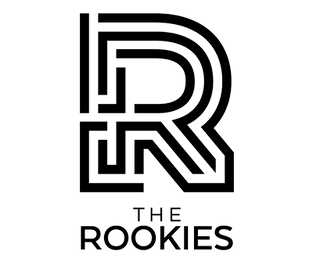

Rank A Certificate
Received a Rank A Certificate for being inside of the top 7% of 3769 entires for the Rookies 2020.

Draft Selection Badge
Nominated as a top entrant for product design category and awarded a draft selection badge.

Gold in UX, Interface & Navigation 2021, Student
Gold in Interaction Design 2021, Student
Gold in Mobile App 2021, Student
Silver in UX, Interface & Navigation 2021, Student
Silver in Mobile Interaction & Experience 2021, Student
Silver in Interactive Design 2021, Student
The Big Problem: Newly retired individuals struggle to strengthen and maintain social relationships after leaving the workplace.
Research
We launched our research phase around two methods: primary and secondary research. This helped gain a complete picture of our problem area and identify where we can make the biggest impact for the newly retired demographic.
Primary
14 In-depth interviews with individuals who meet our demographics.
Secondary
>20 Secondary research sources
"In the beginning when you retire, it might feel more like a holiday, but after that, we see more of a 'use it or loose it' effect."
Gabriel Heller-Sahlgren
Ph.D. London School of Economics
Survey
To gather data, we conducted a survey that received 536 participants.
59%
Of participants were retiring within 5 years
41%
of participants are retired
Affinitization
From our primary research, we gathered language data (Ideas, Opinions, and Issues) from our interviews and survey and organized them into groups based on their natural relationships.

Passions
Volunteering
Travel
These are the top 3 areas that our respondents were most looking forward to during retirement. People enjoyed their flexible schedule and time to do what they enjoyed, while 254 respondents said that traveling is apart of their retirement plans.
Our Assumptions
-
Retirees have a difficult time transitioning into being fully retired.
-
Travel is a large part of retirees plans.
-
Retirees are interested in volunteering.
Where we were wrong
-
Most retirees thought the transition into retirement was not difficult.
-
Retirees have priorities when traveling.
-
Retirees have had a negative volunteering experience.
Competitive Analysis
To gain insight into what is already offered in the market, we conducted a competitive analysis of popular applications These included application such as AARP, ZipRecruiter, and volunteering application, Point.



How Might We?
"How might we create a fun, social environment while helping retirees strengthen and maintain relationships?"
Personas & Journey Maps
To better understand our target user base (people aged 60-75), we developed 2 personas and journey maps of how users will interact with our service.




Ideation
From all of our research, we developed two concepts that tackle our target users needs. We wanted to design a system where retirees can strengthen and maintain relationships by finding engaging opportunities they are passionate about.


Concept Decision
1. Travel concept isn't as focused on our target demographic
-
Could easily be used by a wide range of users
2. Community based volunteer apps are not available to our demographic
-
Struggled to find a wide variety for competitive analysis
-
"Point" app had excellent UX, but limited by location
3. Help retirees make new connection and find those with common interests
-
Passion spaces was an underserved area that we wanted to capitalize on
We chose concept 2
Concept Development
We began with a mid-fi prototype of our application. Why did we jump straight to mid-fi?
-
Older demographic of 60+ doesn't have to focus on imagining interaction
-
More detailed insights on the usability of UI for our older demographic
-
Completed interactive prototype in same rapid time span (~2 days)





Evaluation Methods
User Testing
-
Quick way to measure usability
-
Easy to scale for our participants
-
Can be used on small sample sizes and receive reliable results
-
Can determine if our app is a usable or unusable system
Questionairre
-
Quantitative data
-
The System Usability Scale (SUS)
-
Questionnaire for User Interface Satisfaction (QUIS)
-
Usefulness, Satisfaction, and Ease of Use (USE).
Evaluation Questions
01
Does this encourage seniors to grow and strengthen their social network?
03
Does this help retirees find a fun environment and engaging opporunities?
02
Is the interface logically consistent and easy to use for our senior target audience?
04
Does this provide resources for retirees to have a more enjoyable reitrement?
Average SUS Score (n=10): 85.625 (Excellent)
User Testing Observations
High Fidelity Improvements
Deliver
After 10 weeks it was finally time to present our project to the class. Introducing Ingage, a mobile application where retirees can create and strengthen social relationships by finding engaging opportunities they are passionate about locally.
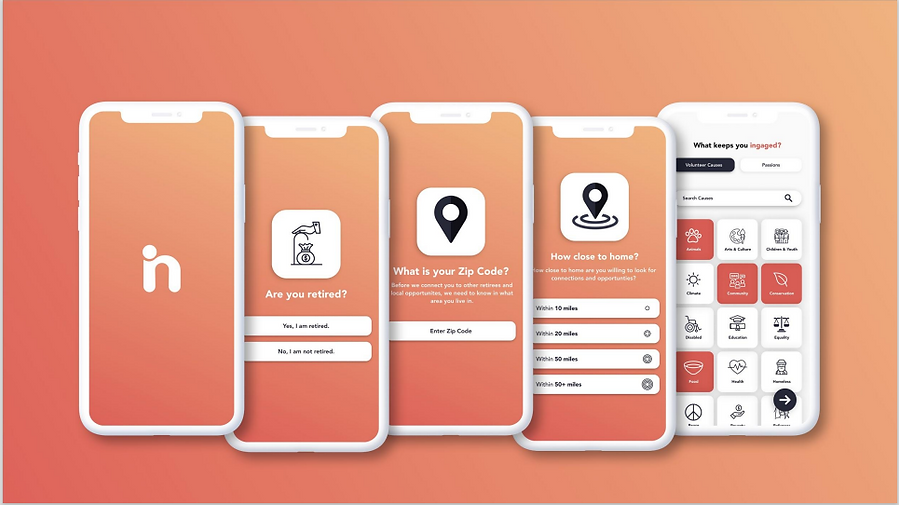
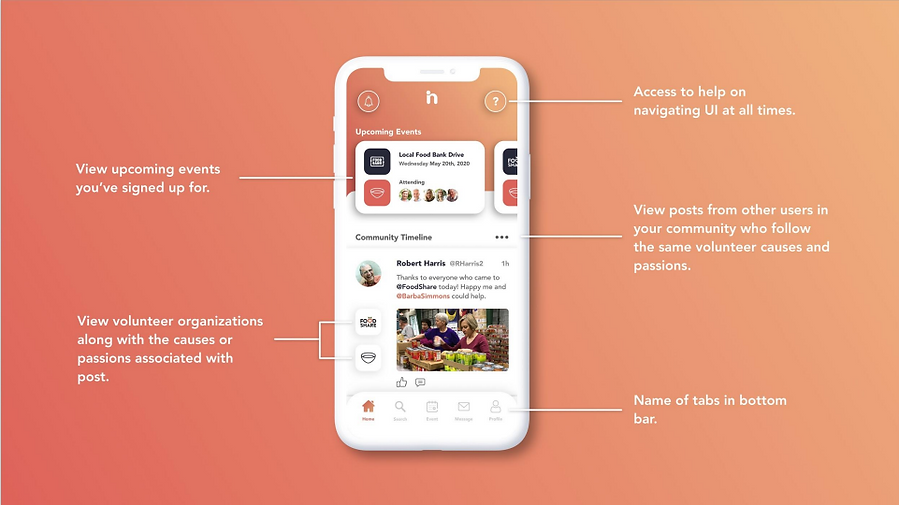
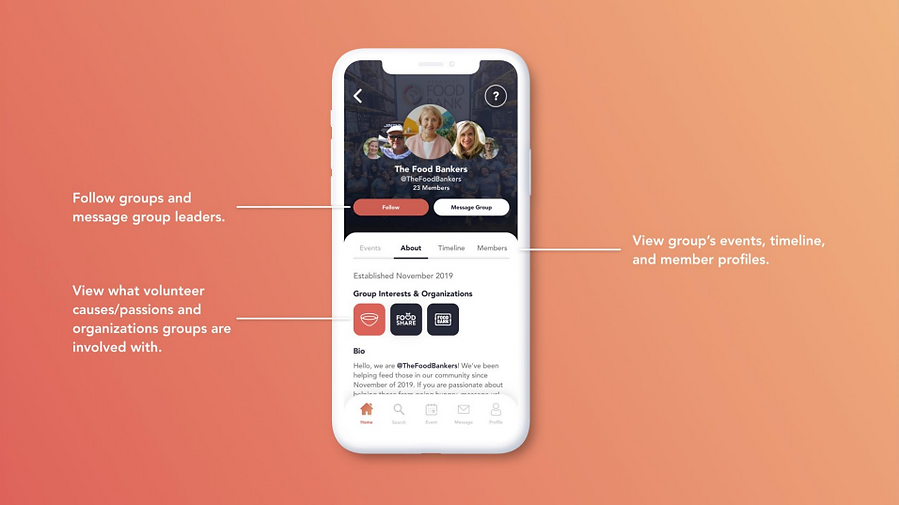
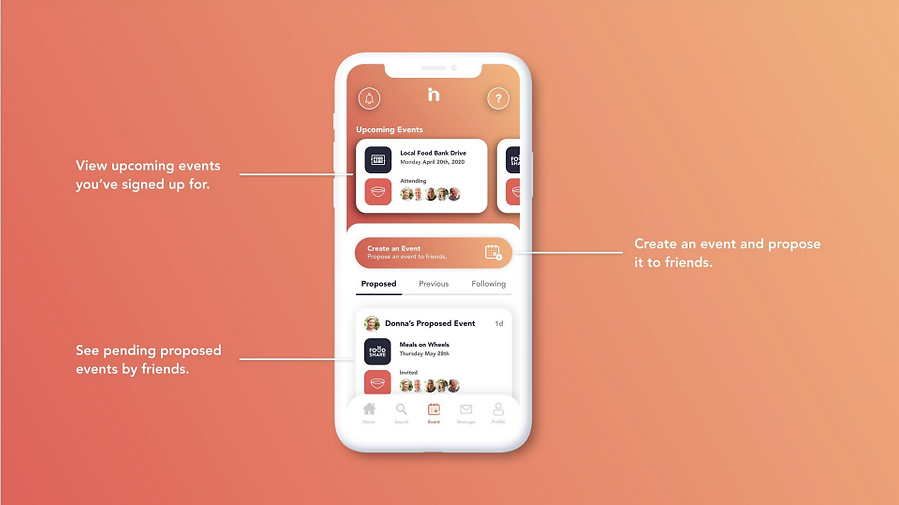
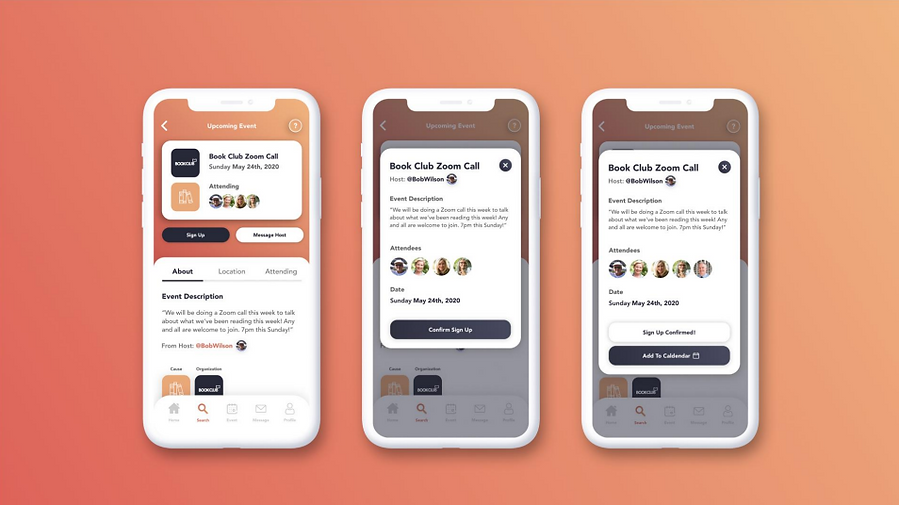
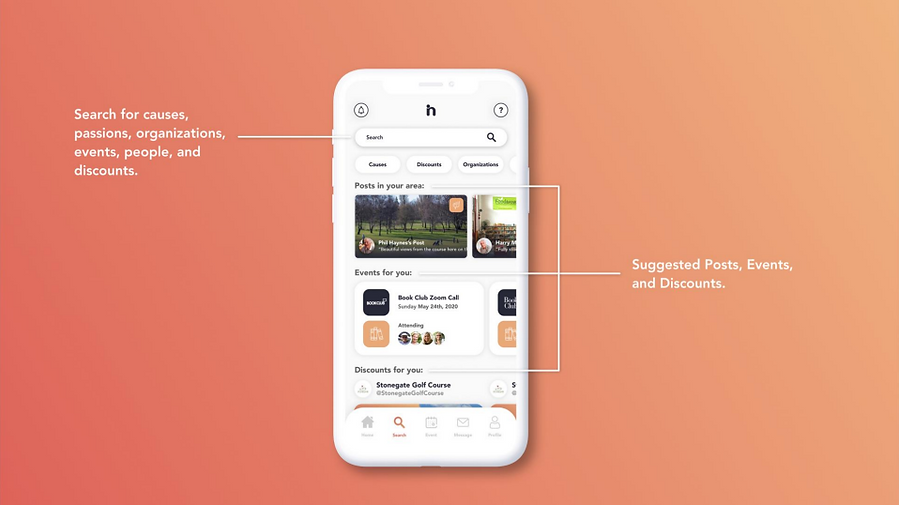
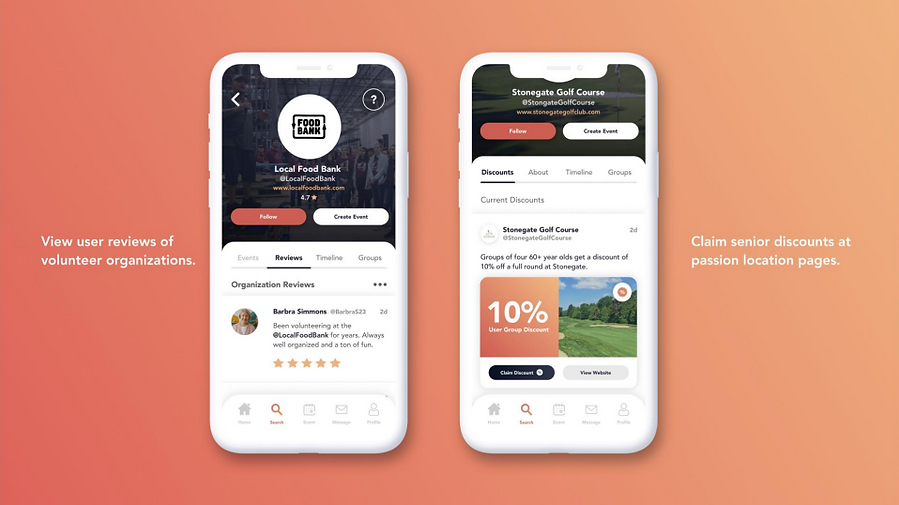
Reflection
This project was the first UX design sprint I had been apart of. This was a monumental learning experience and one that set the foundation for my career as a UX designer. We Discovered a problem space, Defined who we were designing for and what we wanted to design, Developed an engaging and usable application, and finally Delivered the final product to the class. So what was one key learning from this experience?
Accessible design is inclusive design.
Due to the nature of our target audience, peoples aged 60+, most were either not well versed in technology, or they had difficulty reading their phone screen. This posed interesting design challenges, such as adding names to the icons on the bottom bar, or increasing the size of what seemed like readable text. By making our design more accessible to these people, we are able to include them in our ecosystem.
"“Ease of use may be invisible, but its absence sure isn’t.”
-IBM